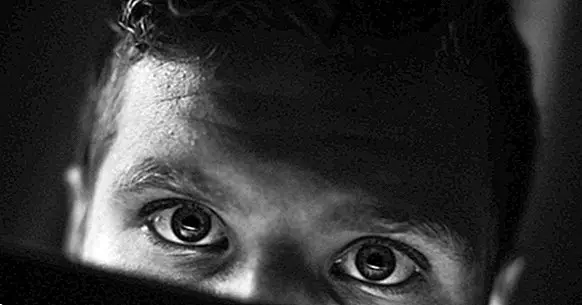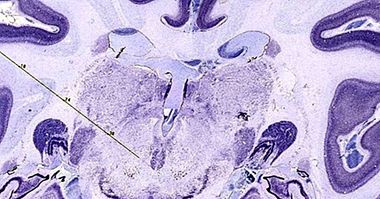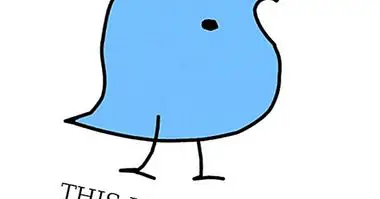Selective attention: definition and theories
One of those interesting psychological concepts is the one that we will explain today, through its definition and the theories that have addressed it. We are talking about the selective attention.
Selective attention: defining the concept
The selective attention , also called focused attention, make reference to the ability of an organism to focus its mind on a specific stimulus or task , despite the presence of other environmental stimuli. In other words, it is when a person gives preference to certain stimuli and is able to attend to the relevant stimuli and inhibit the distractors. Its function and function is essential due to the limitation of attentional capacity.
To exemplify it, you can imagine that you have a shelf full of shoes, and that, since you're going to run with some friends, you need the running shoes. When having to look for the shoes that you have to wear, this task requires selective attention, so you focus your attention on the 'sneakers' to find and use them.
Theories that explain selective attention
There are several theoretical models that aim to explain the operation of selective attention. The best known are those of Broadbent, Treisman, and Deutsch and Deutsch. All these models are known as filter or bottleneck models because they predict that we can not serve all inputs sensory at the same time, so they try to explain why the material that goes through the filter is selected.
But what characterizes each model? Next we explain it to you.
Broadbent's rigid filter model
The Donald Broadbent model It is one of the best known when trying to explain attention processing and specifically selective attention. A work that began with the study of traffic controllers during the war. Broadbent noticed that these professionals because they receive many continuous messages that require attention, and they are faced with a situation in which they can only deal with one message at a time, so they have to decide which one is the most important. Broadbent designed an experiment with "dichotic listening" to investigate the processes that are involved when changing the focus of attention.
Broadbent thinks that the information of all the stimuli that appear at a given moment enter the "sensory buffer" (buffer center) , also called short-term warehouse. One of the inputs is selected by its physical characteristics to pass the filter. Since we have a limited capacity to process information, the filter is designed to prevent the information processing system from becoming saturated.
Sensory inputs that are not selected remain briefly in the sensory buffer, and if they do not disappear quickly. Broadbent assumed that the filter rejected unanswered messages in the early stages of processing.
His research and the task of dichotic listening
In your investigations, I wanted to know how individuals were able to focus attention selectively , and for this deliberately overloaded them with stimuli, the subjects received a lot of information, too much to process at the same time.
One of the ways in which Broadbent achieved this was by sending simultaneous and different messages (a three-digit number) to the right ear and the left ear. The participants were asked to repeat them while listening to both messages. What is known as "dichotic listening task".
The scientist was interested in knowing how the digits would be repeated. Would they respond in the order that they had heard it? Broadbent observed that the digits of a channel were always repeated together. For example, if the left ear heard 673 and the left ear 987, the subjects answered 673 987, or 987 673. An answer of type 867637 was never obtained, in which there would be alternation between channels.
The results of Broadbent's research
The results of his investigations led him to affirm that we can only pay attention to one channel at a time (in the dichotic listening each ear is a channel, so the other is lost). The information that is lost will depend on the characteristics of the stimulus and the needs of the organism. In addition, as already said, the filter, which selects a channel for attention, does this taking into account the physical characteristics: for example, the ear through which the information entered, the type of voice. Therefore, the meaning of what is said is not taken into account at any time in the filter. All semantic processing, that is, understanding what the message says, is carried out after the filter.
This model has received many criticisms, for example, does not precisely define the nature and functions of the processing system , does not provide enough information regarding how an information can be transferred from one store to another, and considers the working memory as a passive store.
The model of attenuated filter of Treisman
Selective attention requires that stimuli be filtered to direct attention. As explained above, Broadbent suggested that the material selected to pay attention (ie filtering) is done before the semantic analysis . Well, the Treisman model maintains this filter idea, but with the difference that instead of eliminating the material, it attenuates it. The attenuation is like lowering the volume, therefore, if you have four stimuli in a room (a crying baby, television, a person talking on the phone and the radio) you can lower the volume of three to focus on the remaining stimulus.
The material that is not paid attention seems to have been lost, but if an unattended channel includes your name, for example, you may hear it because the material is there. In other words, the relevant message passes through the filter, but irrelevant messages are attenuated so as not to overload the central processing mechanism. Irrelevant messages receive some type of analysis, that is why some outstanding feature is detected and our attention is diverted to those channels.
The late filter model of Deustch and Deustch
The model of Deustch and Deustch states that all the stimuli are analyzed and reach a meaning to be able to select the input that will pass to the total consciousness . The selection of this imput occurs depending on how important the stimulus is at that moment.
Unlike the models of Broadbent and Treisman, the stimuli are not filtered at the beginning of the cognitive process, but the filter would be present later in said process, and its main function would be to select the information that passes to the active memory.



















